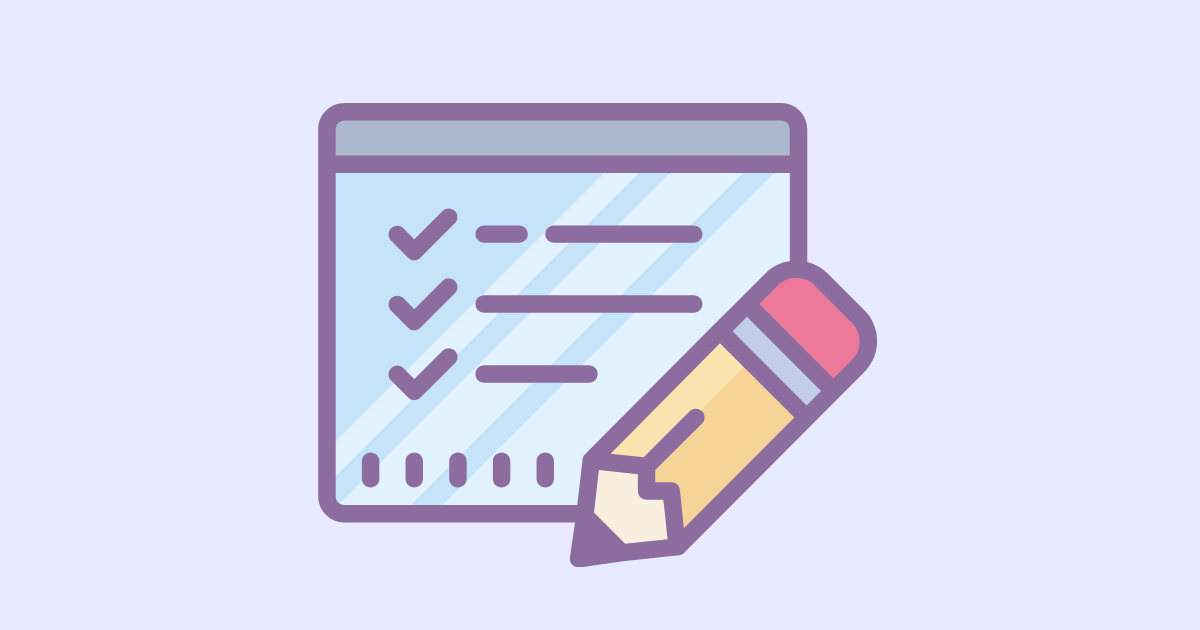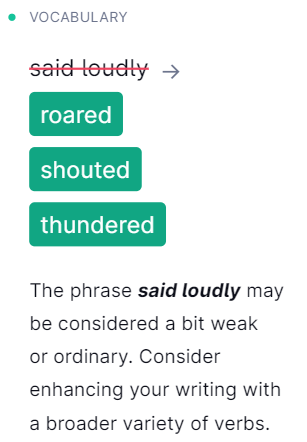How to Edit Your Book Like a Pro: Quick Self-Editing Tips

Writing your book is different than editing the manuscript. The first relies on creative writing, while the second involves a few other skills and methods, which we'll talk about today.
If you wish to carry your self-publishing journey from start to finish by yourself, self-editing is a step of the entire process you'll have to take.
In this article, you'll find the essentials of self-editing, its necessity, and tips on how to edit texts yourself.
Let's dive in.
Table of Contents
- The Importance of Self-Editing
- Self-Editing vs. Professional Editors
- 13 Self-Editing Tips
- Plan your self-editing process
- Distance yourself from your writing
- Choose verbs over weak phrases with adverbs
- Spice up the text with punchy adjectives
- Avoid clichés
- Switch to active voice
- Coordinate the use of tenses
- Read out loud
- Use a consistent tone of voice
- Experiment with your sentences' structures
- Choose your style guide
- Place your work in a new format
- Ask for other people's opinions
- Final Thoughts
The Importance of Self-Editing
Great writing relies on something more than just creative ideas. Yes, they are the essence of your books, but you'll have to self-edit a lot to express them the way they deserve to be read.
Also, a great thing about self-editing is that it gives you complete freedom to write a messy first draft without disrupting your ideas and creative flow.
Imagine starting your book and constantly thinking about writing it perfectly from the beginning. It might ruin your book entirely, leading to unjustified literary sacrifices.
Editing your writing and correcting a few misspelled words or formatting your manuscript is much easier than adding meaning to your book, an exciting plot twist, or dialogues so engaging that it reminds people of Tarantino.
So, let your ideas flow into that draft, which you can improve later.
Self-Editing vs. Professional Editors
Authors believe that someone else can correct their text better than themselves. You can certainly ask for someone else's opinion on your book. That's why ARC teams or professional editors exist.
But writers, especially self-published authors, need to own their book editing process in case there's no financial way to hire a professional editor. And even if you'll eventually hand the manuscript over to someone else, it's better to bring it to an almost final draft.
Once you know how to edit your own work, you'll need an editor just for a few tiny little aspects.
Hire a professional to:
- Get unbiased feedback and a fresh look from the outside that will help you notice the things you missed due to being too familiar with your writing.
- Finding errors that you may not be aware of.
- Get valuable advice from someone with experience in editing books. This will help you in your writing career in the future.
And here's why you should self-edit:
- It will help you save a few extra pennies.
- It will only improve your writing/editing skills for future books.
- You'll start noticing mistakes on the spot when writing your books, and you won't even need to edit that much afterward.
So, if possible, combine self-editing and outsourcing a final draft to a professional editor. Checking out the book from different points of view and by other people is always extremely helpful.
13 Self-Editing Tips
Now, let's see how to edit your writing by following a few self-editing tips.
Plan your self-editing process
You can complete any task if you plan it ahead and break it into subtasks to make everything more bearable.
Simplify your editing process and create a self-editing checklist. For example, you can read and edit one chapter per day.
Or, you can edit a chapter a day, then the following day, you can take a break, which is always a great idea, as we'll see next.
Make a checklist and ✅ every item on that list as you finish doing it. It organizes you and gives you a feeling of accomplishment.

Distance yourself from your writing
Working 24/7 won't do you any good. Being consistent with your writing schedule is fantastic, but the lack of rest will be more harmful than helpful.
Grab a coffee, go for a walk, or take a day off. Clear your mind, and you'll be able to edit your work much better.
After that, you may even be able to finally come up with a few sentences to finish that chapter that you didn't know how.
Choose verbs over weak phrases with adverbs
Whenever possible, replace adverbs with verbs that make your writing more engaging. You don't have to cut them out altogether, as there are contexts where adverbs fit better, but jazz up your text whenever you have the chance.
gripped firmly -> clenched
said loudly -> shouted / thundered
With these kinds of verbs, you can actually show, not tell.
Even Grammarly says so:

Spice up the text with punchy adjectives
Since we're at it, we can talk about adjectives too.
Different words could replace weak adjectives, such as "very bad," "really happy," and others. It's OK to use them where your story could use them for a greater impact, but you can replace those words with more punchy ones.
You can change them with less common adjectives to sound more confident. When you wish to replace a word with a synonym, but you're not sure which one, use Thesaurus.
Here are some examples:
Instead of very bad, you can use words like atrocious, dreadful, erroneous;
Instead of very happy, you can use elated, ecstatic, chipper, etc.
You get the idea. You're the writer.
Avoid clichés
Try to self-edit and replace trite phrases with something much more original. Don't make your audience roll their eyes in annoyance, and avoid clichés. They are so overused that they'll weaken your writing.
Switch to active voice
It's always better to choose first-person writing as it allows you to express your thoughts better. It also makes the text much easier to read and follow.
The magic of writing is that you can express the same idea in different ways. But if you are trying to make your writing more engaging, you need to use an active voice.
However, just as with adverbs, you can use passive voice too. There are situations when you need to, and it's OK to do so. But if the context allows active voice, use it.
Coordinate the use of tenses
Another essential aspect that should be on your self-editing checklist is the use of tenses.
Do you wish to write in the past or present tense?
Also, from which point of view?
Even the books based on the stream of consciousness method (see James Joyce, Virginia Woolf) follow a logical sequence. A more difficult one, indeed, but nevertheless a logical one.
You'll have to map your story's timeline in chronological order, then see how you can play with the tenses so they would make sense.
Read out loud
To clean your writing as much as possible, read it out loud. Sometimes it's easier to spot unwanted words or things that don't sound right by hearing them.
It goes the same for repetitive phrases and words. When you notice a word that keeps coming up, replace it with a synonym. If you keep using the same phrase over and over again, try to change it.
You can use a text-to-speech program or ask someone else to read it back to you while you jot down things you notice.
Use a consistent tone of voice
Do you want to sound formal? Informal? Humorous?
If you start in a certain way, you have to make sure you're being consistent throughout your text. It might come as confusing when you keep switching the tone of voice.
Experiment with your sentences' structures
Mix sentences with different structures to keep the reader interested throughout the book.
Use short sentences combined with longer sentences.
Don't use blocks of text throughout the entire book. Also, don't use only very short sentences on every page.
The practice of reading out loud will help you here as well. As you read, pay attention to your breathing and intonation.
If you pause too often, you have stumbled upon many short sentences, some of which you can combine into several larger ones. And if you can hardly read a long fragment, stop and think about how to make several smaller fragments out of it.
Choose your style guide
Your book should follow a particular writing style, adhering to its grammar from the very first words. This will help you stay consistent throughout the book.
There are four writing styles:
- Associated Press Stylebook (AP Style)
- American Psychological Association (APA Style)
- The Chicago Manual of Style (Chicago Style)
- Modern Language Association (MLA Style)
Each style is used for a certain type of writing. For example, the AP Style is used in journalism or copywriting, the MLA for academic purposes, while the Chicago Style is mostly used for extensive writing and book publishing.
So, double-check if the formatting of your manuscript is correct. Pay attention to how you wrote your titles, where you placed your commas, and so on.
Place your work in a new format
You can uncover undetected errors by viewing the text in another form, such as a PDF, or better yet, by printing it. You can also experiment with the font size and style.
It's like reading with a fresh pair of eyes.

Ask for other people's opinions
Nothing compares to an objective reader's critical point of view. Only with this approach can you get valuable feedback from an audience. A beta reader can give you precious feedback on your future book, helping you to edit and improve it.
Final Thoughts
Once you know how to edit your writing, you can turn any draft into publishable manuscripts. The ability to self-edit comes with practice, but it pays off in full, reflected in the higher quality of your texts.
After self-editing, you should always seek additional help from an objective reader to help you get that final draft you worked for.
Hopefully, this list showed you how to edit your writing so that you can improve your work by yourself.